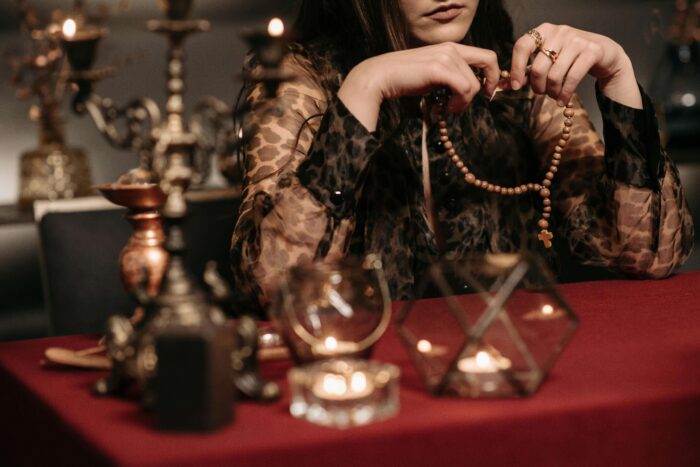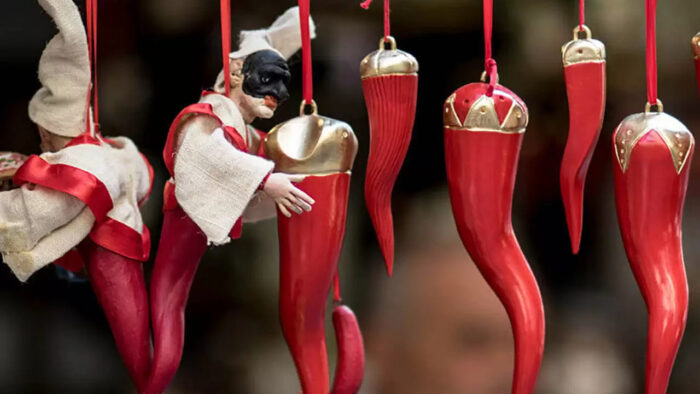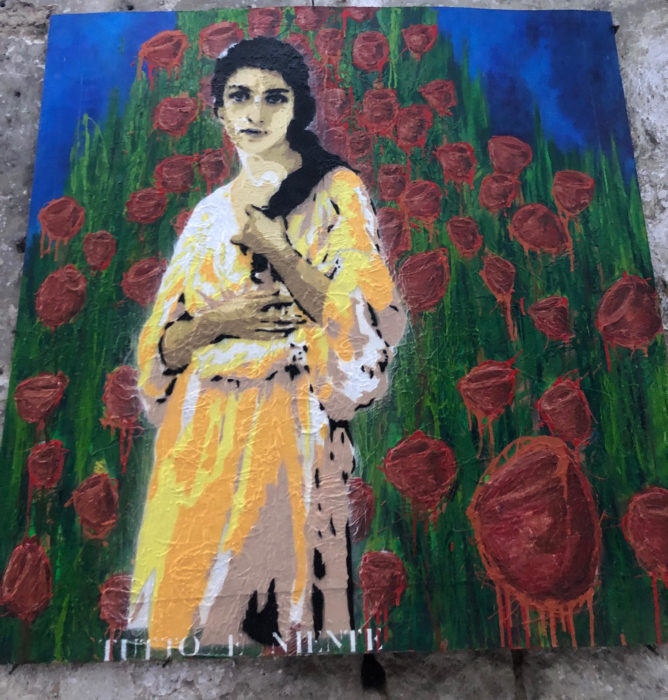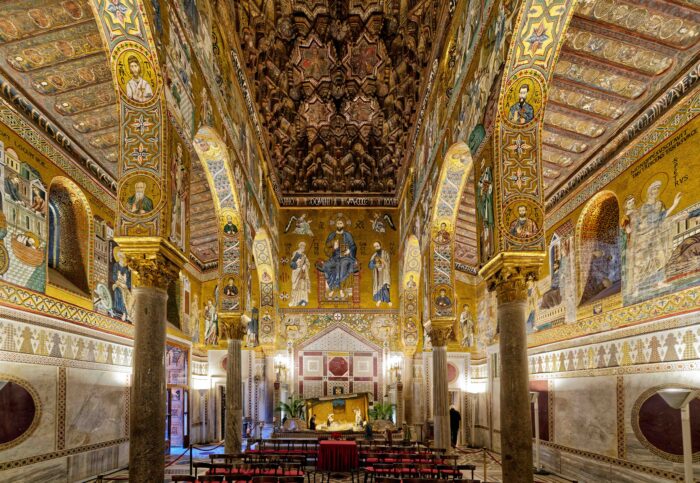Esoteric Sicily: a journey into the occult charm of symbols, rituals and superstitions
 Sicily is one of those places where the line between reality and mystery is never exactly clear. Here, among volcanoes that puff like ancient gods and seas that guard stories of deities and demons, the esoteric is not a peculiarity: it’s almost part of the landscape.
Sicily is one of those places where the line between reality and mystery is never exactly clear. Here, among volcanoes that puff like ancient gods and seas that guard stories of deities and demons, the esoteric is not a peculiarity: it’s almost part of the landscape.
Every stone, every alley and every church seems to hide a symbol, a ritual or a superstition that stubbornly survives modernity. Because yes, 21st-century Sicilians may use artificial intelligence, but they will still roll their tongue three times in their mouth before saying something that might “bring bad luck”. Ready to discover the occult charm of Esoteric Sicily?
Our journey through Esoteric Sicily begins with the ultimate symbol: the Trinacria, the emblem of the island, omnipresent on ceramics, magnets and patriotic tattoos. But who exactly is that woman’s head with three legs and snakes in her hair? The female figure at the center represents Medusa, the mythical Gorgon, symbol of power and protection. The three legs, arranged in a triangle, symbolize the three capes of the island – Capo Peloro, Capo Passero and Capo Lilibeo – but also eternal movement, cyclicality and dynamic balance. And then there are the wheat ears, often intertwined around the head: a tribute to Demeter, goddess of fertility and harvest, whose daughter Persephone – not by chance – was abducted right here in Sicily, by Hades himself.
Moral of the story: the Trinacria is a perfect esoteric cocktail of Greek myths, cyclical energies and primordial femininity. Anything but a simple tourist logo!

Witches, “magare” and sorceresses: the “specialists” of the mystery
Every Sicilian town had, at least until a few decades ago, its trusted magara. Respected and feared women, halfway between healers and witches, guardians of a popular knowledge that blended religion, herbalism and a touch of magic. No Hogwarts diploma required: just a candle, a rosary and a whispered formula “against the evil eye”.
Some magare performed love charms (nothing to do with Tinder), others dispelled curses, others prepared herbal infusions to ward off negativity. All of this strictly in secret, with a rituality that was almost theatrical: prayers murmured softly, backwards signs of the cross, and “cutting the evil” with scissors.
And there was always the final warning: “Ma nun ci pinsari cchiù, sinnò ci torni!” — don’t think about it anymore, or it will come back. Popular psychology at its finest and surprisingly effective.

Esoteric Sicily: the evil eye, public enemy number one
Another pillar of Esoteric Sicily: the malocchio, the evil eye. Here, no one needs to literally glare at you; it’s enough for someone to say “you look great today!” with too much enthusiasm, and bam, misfortune arrives. To detect it, there are actual “diagnostic tests”: a few drops of oil in a glass of water which, if they spread, indicate the evil eye is present. If they stay compact, you may breathe easy. But the real secret lies in those who know how to “remove the eye”, an art passed down only on Christmas Eve or Epiphany night, and only from woman to woman or man to man. A sort of secular, yet sacred initiation. To ward off misfortune, there are amulets: the red horn (clearly Neapolitan in origin), the coral horn, the blessed olive branch, or even a tiny pouch of salt. And for the truly superstitious, the apotropaic formula is never missing: “Touch iron, and move on”.

Miracle-working saints and white magic
In Sicily, religion and superstition don’t exclude each other: they coexist effortlessly.
Some saints are invoked for rain, others for illness, and some – according to popular tradition – are believed to have actual “magical” powers. In Palermo, for example, people say that Saint Rosalia is not only the patron saint who saved the city from the plague, but also a sort of intermediary between heaven and earth, capable of granting impossible wishes.
In Catania, Saint Agatha protects from fire (and from Etna, naturally), but also from curses.
Then there is Saint Calogero, dark-skinned and especially venerated in Agrigento, to whom women offered bread shaped like a child to ask for fertility. An ancient pagan rite dressed as Christian devotion, classic Esoteric Sicily.
In short, saints here are not just religious figures: they are energetic allies, guardians of a local cosmic order where the sacred and the profane embrace without shame.

Hidden symbols and magical architecture in Esoteric Sicily
A distracted stroll through Palermo or Catania might not reveal it, but the island is full of esoteric symbols: six-pointed stars, all-seeing eyes, rose windows that resemble medieval mandalas. The Norman Palace in Palermo hides symbols linked to Templar wisdom. And the Palatine Chapel, with its golden mosaics, is a perfect balance of Christianity, Islam and Eastern traditions: a temple of Sicilian spiritual syncretism. In Caltagirone’s traditional ceramics, you’ll find apotropaic motifs, while in the historic center of Noto it is said that certain Baroque buildings were designed according to precise “alchemical” proportions.
Even Etna holds symbolism: the ancients saw it as the door to the underworld, home of the Giants, but also a source of purification and rebirth. A perfect symbol of Sicilian duality: destruction and rebirth, fire and light.

Everyday superstitions: between irony and survival
If you think all this belongs to the past, think again.
The average Sicilian of 2025 may be a digital professional, but they will never walk under a ladder, never place a hat on the bed, and if they see a black cat…they might choose another street… “just in case”. Esoteric Sicily never goes out of style!
Sicilian superstitions are little secular liturgies:
-
Salt must never be passed hand to hand (it brings arguments).
-
If you spill oil, you must touch the bottle and say “abundance”.
-
Open scissors symbolize division: don’t leave them on the table.
-
If you dream of teeth falling out, someone is “going away”.
-
And if your ears ring, someone is talking about you (good or bad depends on which ear).
Ironic twist: many of these rituals have been passed down for generations without anyone remembering why. But isn’t that the real charm of the esoteric? It survives precisely because it cannot be fully explained.
Esoteric Palermo, alchemical Catania, mysterious Syracuse
For those who want to explore Sicily from a magical perspective, there are must-see stops:
-
Palermo, with its alleys full of legends, from the souls of Purgatory at Santa Maria degli Agonizzanti to the mysteries of the Cappella dei Filippini.
-
Catania, where it is said an underground “magnetic” river once flowed beneath the ancient city, and where every lava stone holds ancient energy.
-
Syracuse, the home of Archimedes but also of mystery cults dedicated to Demeter and Kore, with the Sanctuary of the Madonna of the Tears continuing, in its own way, that tradition of wonder and sacredness.
And then there is Erice: shrouded in mist, with the Temple of Venus, perhaps the most “enchanted” place on the island, where priestesses are said to have performed love rites under the moon.
A perfect alternative travel itinerary that blends faith, myth and enchantment for those who want to discover Esoteric Sicily: a different Sicily, perhaps with a touch of shiver.

